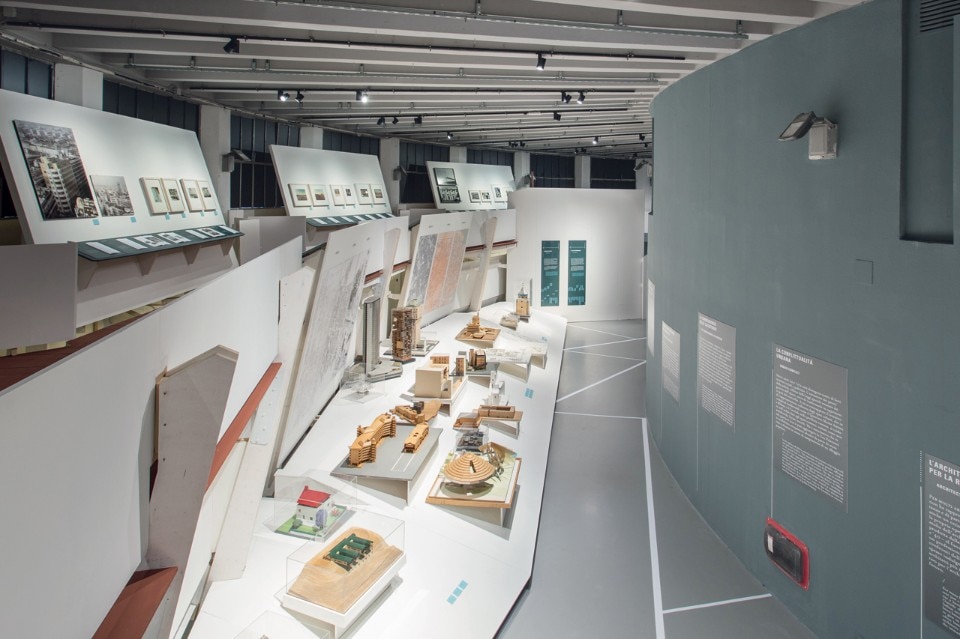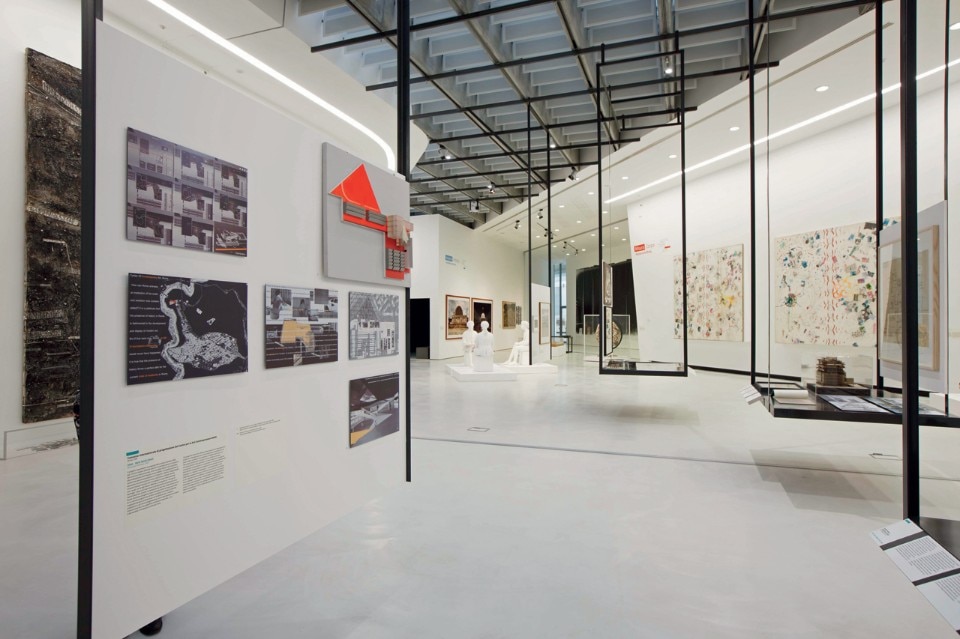Two recent exhibitions have drawn attention to Italian architecture in the second half of the past century: one at the MAXXI in Rome, and the other at the Milan Triennale.
In Rome the process leading up to the institution of a national museum of architecture has reached its conclusion, with the opening of a permanent exhibition of material from its collections. In Milan the exhibition “Comunità Italia” illustrates Italian architecture from 1945 to 2000. The two events are completely different. But they deal with the same subject and work on the same materials: the Italian architecture of our recent past. We have looked at them together because they have taken place at the same time, albeit for entirely dissimilar purposes. In Rome the museum dedicated to 20th century and contemporary Italian architecture – established by law way back in 1999 – is at last taking shape. It has taken shape with an exhibition devised to give a permanent account of a significant part of the material contained in the collections held by the museum, outstanding among which are the most prestigious and complete collections dedicated to the works of three undisputed masters: Pier Luigi Nervi, Aldo Rossi and Carlo Scarpa, with their thousands of drawings, models, photo reproductions and documents.
Now if these three giants of Italian architecture clearly, and also geographically, represent this country, the rest of the collections, albeit extraordinary and of great value taken case by case, is a bit too Rome-centric. Probably the institution of this museum has reached us too belatedly – think for example of what was done on the same subject, in the 1980s, by other European countries like France or Germany – and today it has unfortunately become very complicated to select and acquire the most important and significant archives of that historical period. However, much can still be done, especially as regards not only individual architects, but for the numerous institutional archives, both public or private, that risk disappearing due to unawareness or to the incapacity of the institutions themselves: they are still waiting for someone to concern themselves with them, for someone to take care of them.
That is why it is so important for our country at last to have a national museum in which to gather, conserve and exhibit this type of material, opening it to anybody interested in visiting it. The fact that from now on an eminent institutional context like that of the Museum of Twentieth Century Arts can preserve our records of Modern architectural production and bring it out of its fenced enclosures to be shown to the general public, and not only to architectural circles, is to be hailed as a major event for the whole of Italy and for anyone who cares about these matters.
We do not think that good architecture need an infinite number of languages
To talk about architecture in such generic terms can, we think, be truly misleading. On looking at the past one ought to say which architects, which architecture or at least which tendencies did indeed reckon with the physical environment that has shaped our territory in the course of time. From this point of view therefore, among the architects included in the exhibit, to tell the truth there do not seem to be many that have based their work on issues of this type; certainly only very few of them worked on the basis of the places in which their designs were situated, whereas the majority are instead superimposed on the places, imposing their own forms on them, at times with arrogance and at other times unconsciously because it was not felt necessary to do so, whilst perhaps ostensibly claiming the opposite.
As an architect, I ask myself why continue to draw up lists of everything and its opposite, what purpose can they serve and for whom? Would it not be better to express critical apparatuses which fix precise viewpoints that can be shared clearly and unambiguously, giving us the instruments needed to judge a work with a proper awareness? Would it not be better today to work on the construction of new theories to back the architect’s work, as our culture admirably did for a few decades, from the end of the war until the ‘80s, with very successful results and critical acclaim?
It is important to work for durability as opposed to the provisional

Architecture, unlike the other arts, is a collective art

